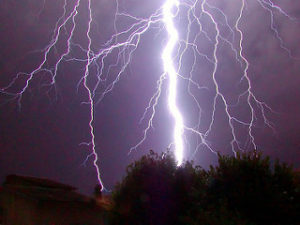 Have you ever witnessed an intense lightning storm? If you live in the state of Florida, chances are that you have. Why? Because Florida is the official lightning capital of the United States. That may sound impressive, but it’s not exactly the kind of thing you want to be famous for, is it? In one instance, lightning struck ten different people in a single week in Florida. In Florida at least, lightning safety is more important than you might think.
Have you ever witnessed an intense lightning storm? If you live in the state of Florida, chances are that you have. Why? Because Florida is the official lightning capital of the United States. That may sound impressive, but it’s not exactly the kind of thing you want to be famous for, is it? In one instance, lightning struck ten different people in a single week in Florida. In Florida at least, lightning safety is more important than you might think.
There are certain things that we typically take into account when securing ourselves, our families, and our homes. We consider how to avoid fraud, for instance, or watching out for family vacation scams. But, we rarely think about protecting ourselves from something like lightning. It feels like one of those things that happens to other people, but never to us. Unfortunately, in a state like Florida, protecting yourself and your loved ones from lightning should be a serious consideration when it comes to securing your family and your home.
The Dangers of Lightning
Believe it or not, lightning isn’t just dangerous for those who are outside in a lightning storm. In fact, lightning can enter a home and injure or even kill those inside. While moving inside significantly reduces your chances of injury during a lightning storm, it’s not necessarily fool-proof in and of itself. It’s therefore important to recognize the potential threats that lightning poses when inside of your home, and take the necessary steps to minimize your exposure to them.
When lightning strikes outside of your home, the electrical current associated with the strike can enter your house through water pipes, cables, or electrical wires that run from outside of your home into your house. After making its way indoors, this high voltage current can travel through all sorts of mediums: your plumbing system; phone or electrical cables; and even through concrete floors or walls, the latter of which are quite common in Florida homes.
Preventing Lightning Exposure Indoors
In order to avoid potential injury from lightning while indoors during a thunderstorm, there are several precautious you can take. First off, be sure that you keep your distance from any electronic devices that are attached to a cord or cable. Examples of such devices include home computers, video game systems, or home phones. Injury is even possible due to proximity to a television or cable box.
Additionally, you’ll want to keep your distance from water sources during a storm. Don’t take a shower, do dishes, or contact any source of running water inside your home while a lightning storm is taking place. If your home has concrete floors and walls, it’s important to recognize that the rebar inside of the concrete is made of metal and can conduct electricity.
Educate the Family about Lightning Safety
Taking all of these preventive measures during a lightning storm can help keep you and your family safe. It’s important to ensure your family is aware of these precautions as well and well-versed in lightning safety. However, there’s only so much you can do to protect your home itself. In some instances, damage to your house during a thunderstorm is unavoidable. Part of lightning safety for homeowners means ensuring that you have a comprehensive homeowners insurance policy in place. With the proper policy, you can rest easy knowing that your home is protected.






